Of all the wondrous sights Japan has to offer, their terraced rice fields are a national jewel. Often described as Japan’s pyramids, these leveled types of rice fields splay the mountainous regions throughout the country. They preserve local biodiversity and wildlife while also producing food and preventing landslides.
These come from centuries of innovation, sweat, and toil of the farmers who carved them into the sides of mountains and hills.
The sight of these inspires respect for the intense labor required. But, they are a disappearing natural form of art, with farmers abandoning these for flatland operations.
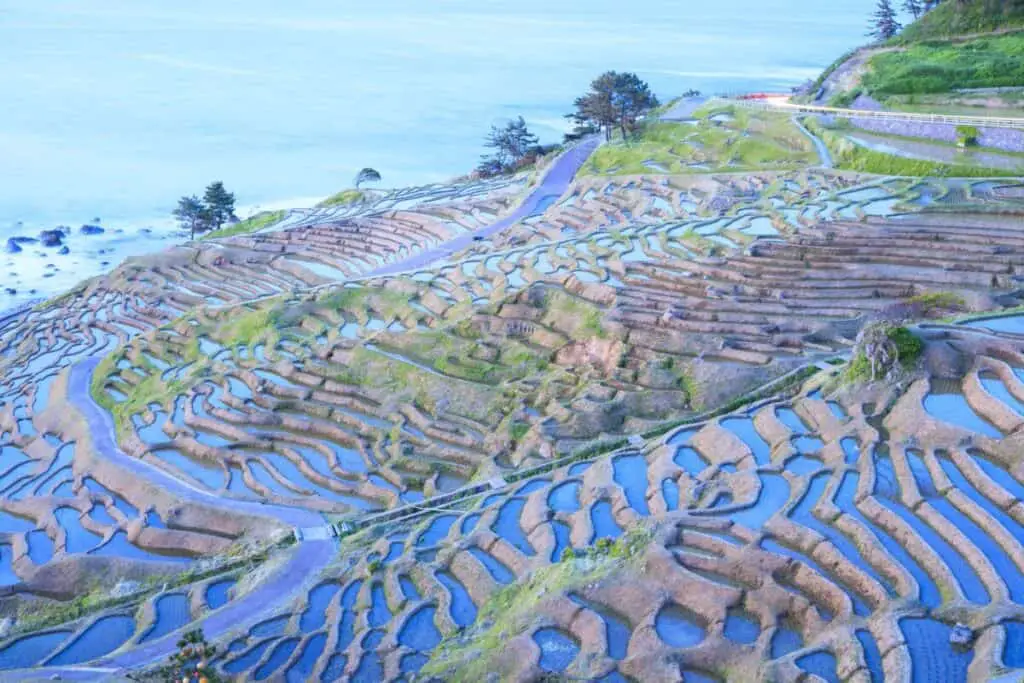
Brief Overview
- What Is a Terraced Rice Field?
- More than Farming
- Beautiful Views
- History ; Culture behind Japan’s Rice
- Production of Rice in the 20th Century
- Spiritual Associations with Rice
- Otaue Rice Planting Festival
- Modern Terraced Rice Fields
- Farming Advancements
- Remaining Tanada Farmers
- Regaining Popularity
- Tanada throughout the Seasons
- Most Beautiful ; Notable Terraced Rice Fields
What Is a Terraced Rice Field?
Also called “Tanada,” a terraced rice field is a sloped agricultural format that cuts into a series of receding flat surfaces or platforms. These form to resemble steps and help in the farming of rice on hills and mountains.
However, you will also see terraced rice fields called “senmaida,” or “a thousand terraced paddies.” Senmaida are huge and wide swaths of land containing many groups of tanada. Regardless, there are two distinct forms of rice grown and cultivated in various parts of Japan: koshihikari and sasanishiki.
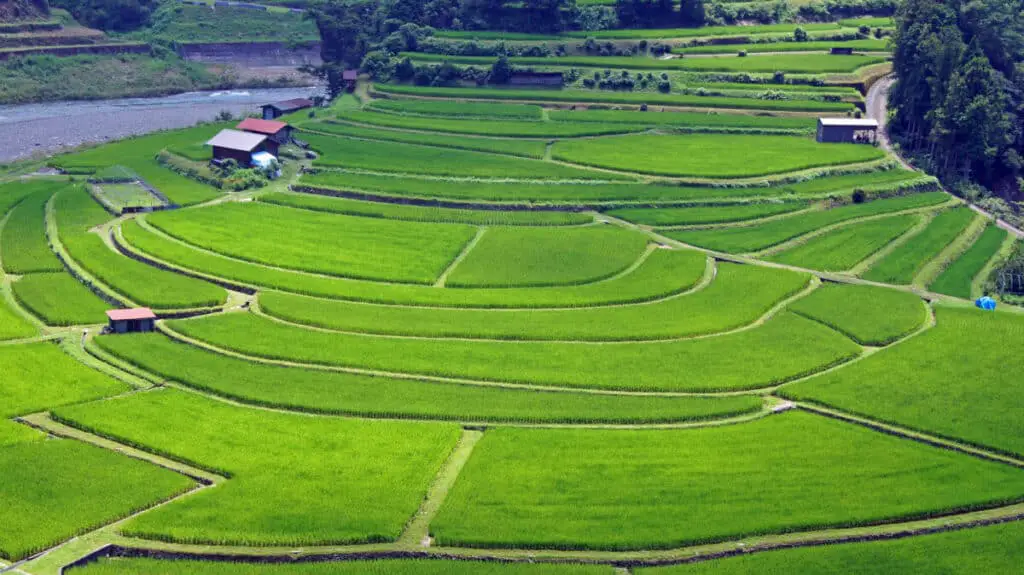
More than Farming
The best thing about tanada is that they help to reduce surface runoff and erosion while giving support to irrigating the crop.
Farmers have refined and developed these tanada over centuries to the point that there are no other agricultural practices in the country that compare to these particular rice fields.
Beautiful Views
They come in various shapes, sizes and layouts. All of which are beautiful and breathtaking; an amazing display of Japanese ingenuity.
Many of these tanada command a perfect ocean or mountain view and provide a memorable sight of the sunset as it plummets into the horizon in the evenings.
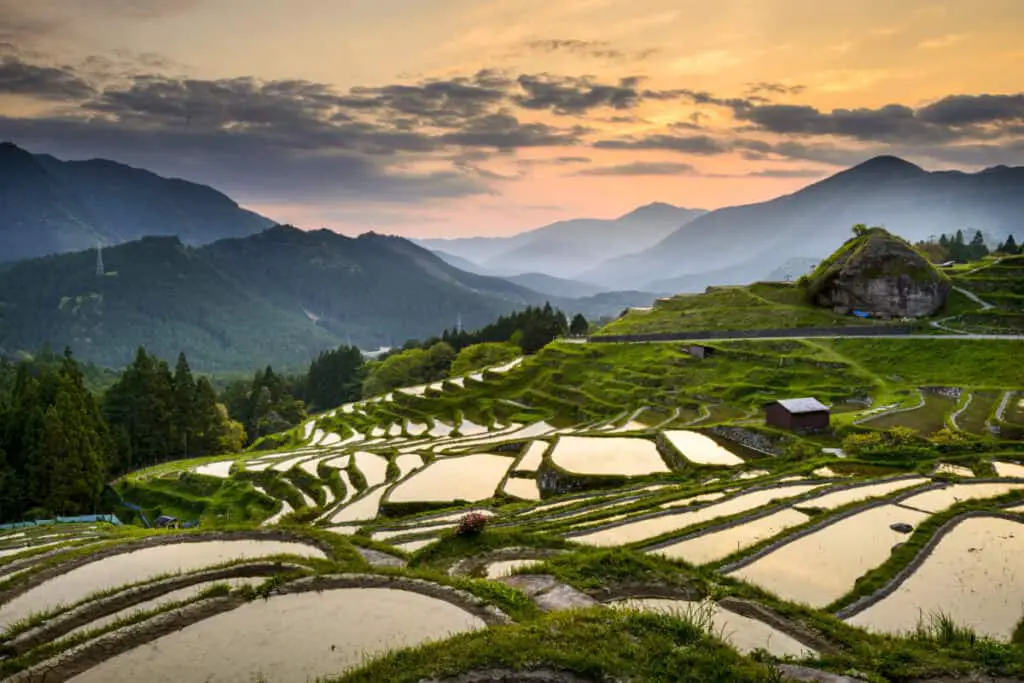
History And Culture behind Japan’s Rice
For more than 2,000 years, Japan has been well known for its rice production. Rice is more than a simple part of Japanese cuisine.
It’s integral to the country’s culture, history, economy, identity, and religion. At one time, it was only reserved for the warrior classes. In ancient eras, it was a form of money used to pay a tax.
This tax would go to noblemen and warriors while peasants ate millet and barley. But, during the Edo Period, rice farming became more lucrative and successful for the working classes. Farmers began to enjoy rice as part of their daily diet.
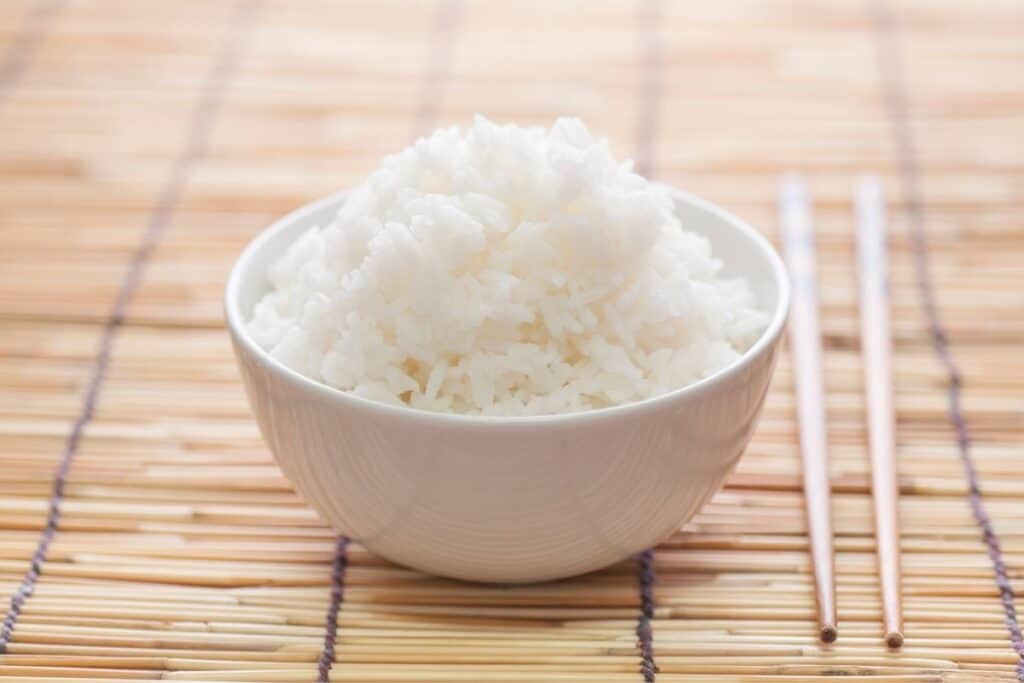
Production of Rice in the 20th Century
Upon entering the 20th century, rice soon became a staple for all Japanese people and gained widespread availability. This is still part and parcel of the culture to this day, being an important and valued food staple.
Spiritual Associations with Rice
Buddhist and Shinto rituals and rites hold the rice in sacred regard. Not only do the Buddhist monks eat it for breakfast but Buddhist homes will also have saucers of rice after a meal.
In Shintoism, plant seedlings are home to spirits, also called kami. They place rice on household altars to honor ancestors as well.
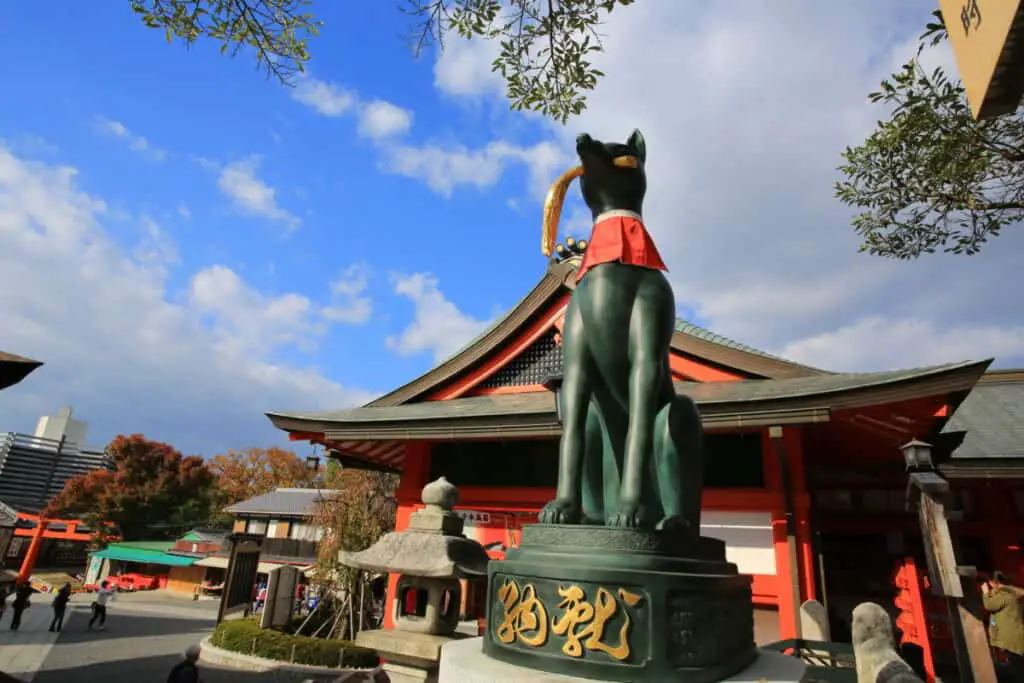
Otaue Rice Planting Festival
Many Shinto festivals and celebrations focus on rice and ensuring a good harvest. One such celebration is the Otaue Rice Planting Festival at the Sumiyoshi Taisha Shrine in Osaka of the Kansai region.
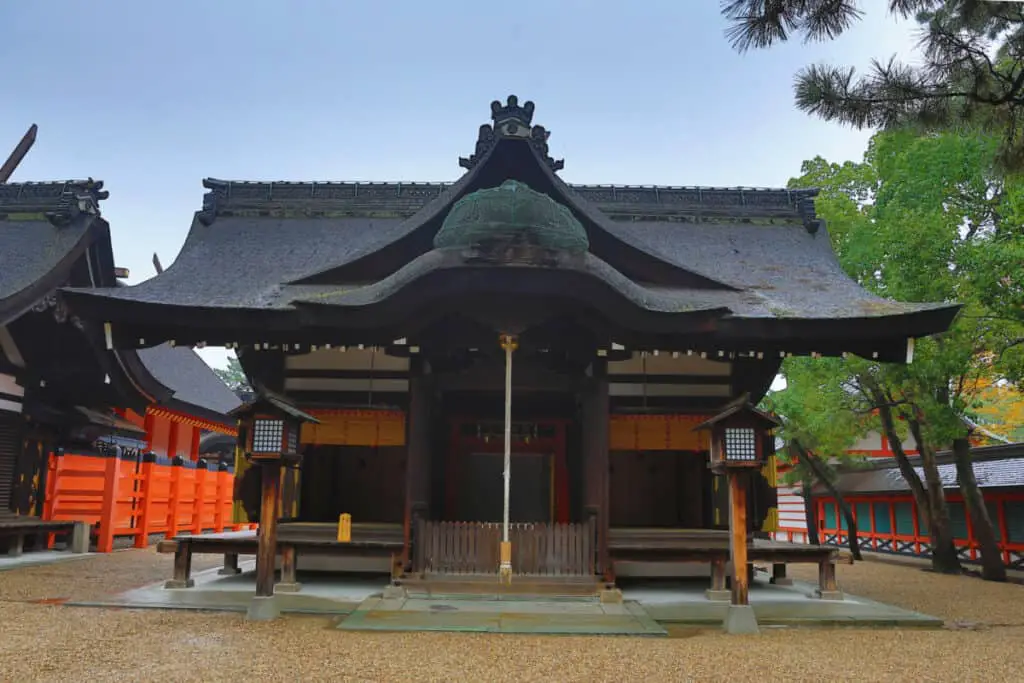
This is one of Japan’s oldest and most famous festivals. People in Japan have this annual celebration in June and have done so since 211 AD.
“Otaue” refers to replanting rice seedlings in paddy fields. “Ota” is one of the many Japanese words for “rice” and “ue” translates as the verb “to plant.” Ergo, “otaue” literally means “to plant rice.”
Per Shinto tradition, each rice seedling contains a powerful spirit, or “kami.” The rituals, music, dancing, and processions are to entertain these spirits so that rice grows strong until the autumn harvest.
For example, there is a Samurai procession of warriors dressed in full armor alongside 150 girls from local schools performing the Sumiyoshi Dance.
Modern Terraced Rice Fields
While the Japanese people place a high value on their rice production, many are abandoning these terraced rice fields.
Since the introduction of modern agricultural equipment, such as transplanters and rotary tillers, in the 1960s, higher yields became possible.
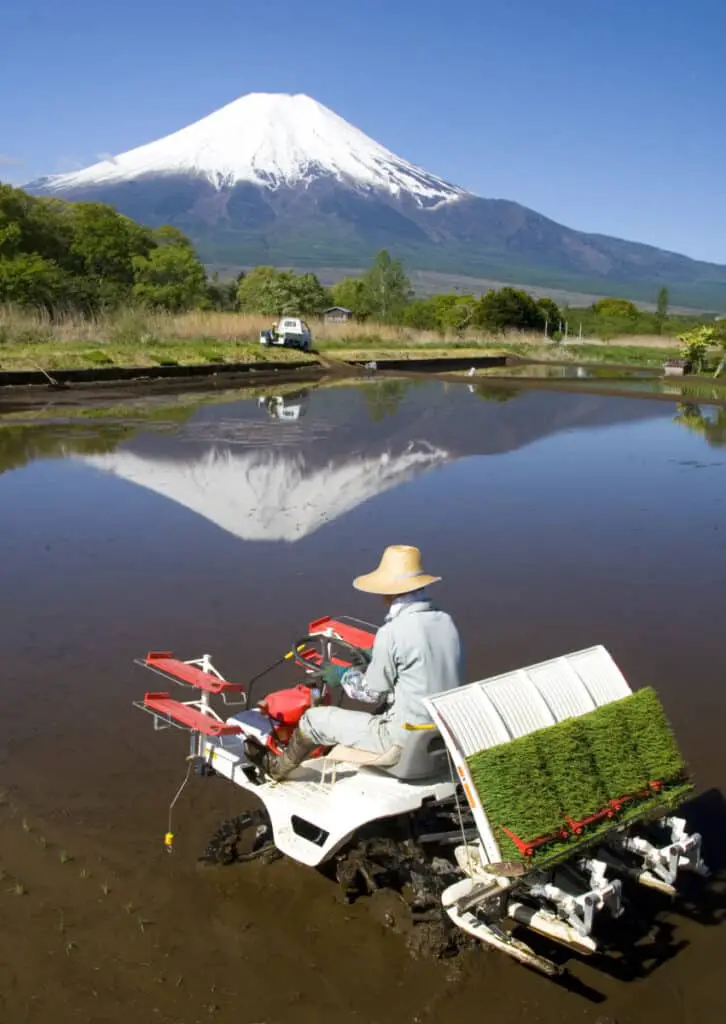
Farming Advancements
Combining this with advancements in pesticides and fertilizers, other areas became more suitable to cultivate rice.
Such new technological advancements aren’t ideal for mountainous and hilly regions. Therefore, farmers abandoned their lands for more favorable cultivation opportunities.
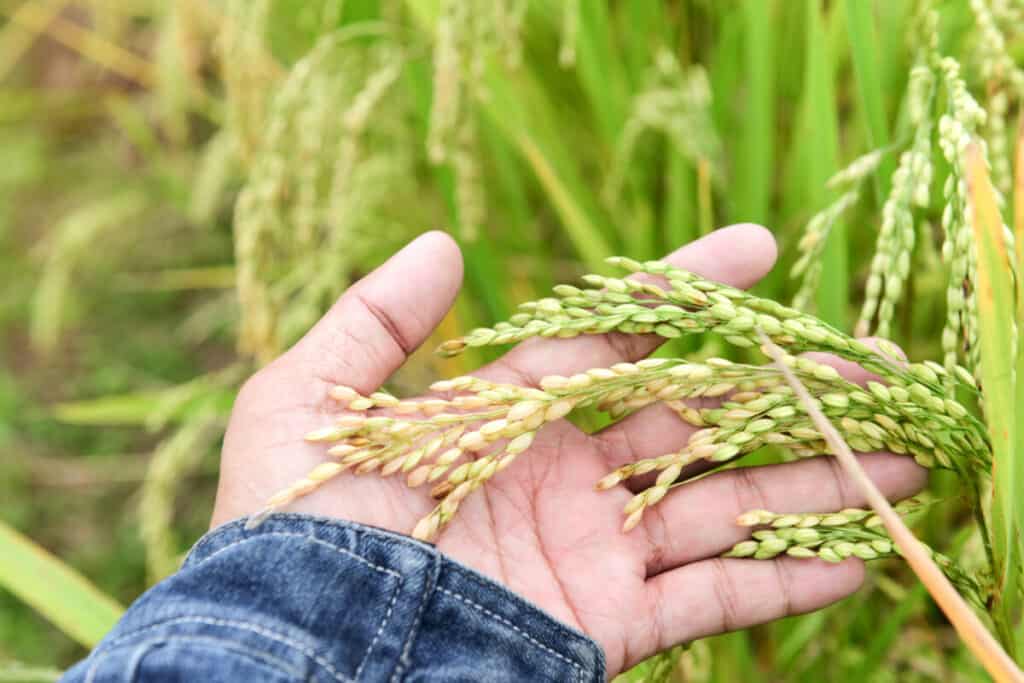
Remaining Tanada Farmers
Regardless, there are some farmers who stay in their mountain terraced rice fields and opt to do things the traditional way.
They do this without much modern help from technology and perform most of their efforts by hand. In fact, it takes five to 10 times longer than in flat areas and that’s just the result of not using modern equipment.
But, the farmers tend to love their way of life and don’t see it as a hardship. Every part of the process is sacred as they follow in the footsteps of their ancestors.
From planting in spring to harvesting in autumn, they take great care of the rice plants and do whatever it takes to ensure a successful crop.
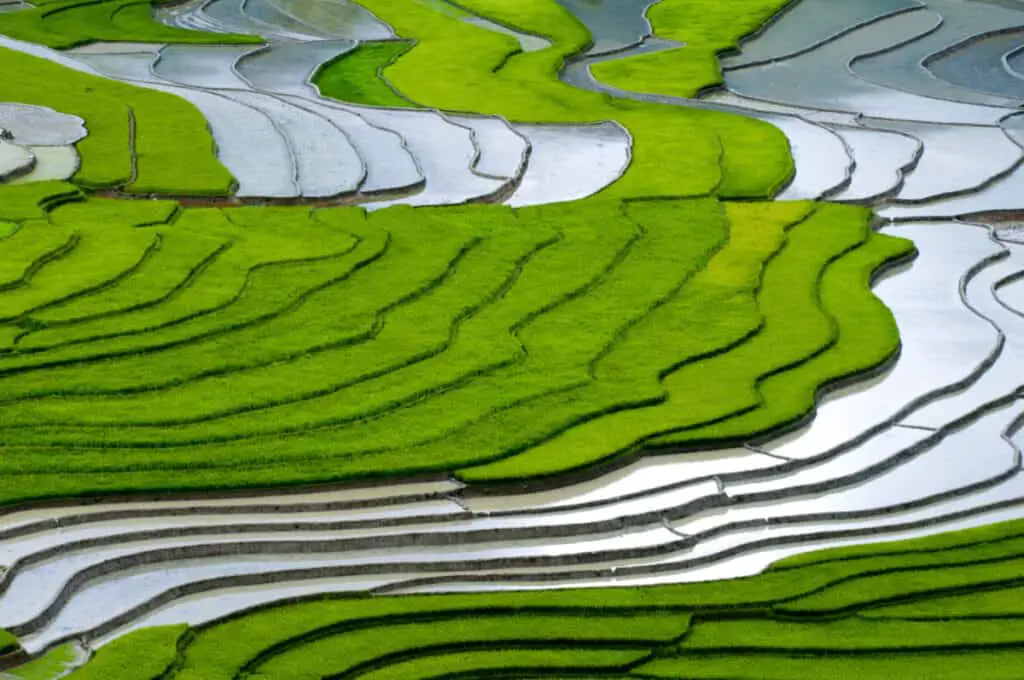
Regaining Popularity
However, in the last few years, many Japanese have begun to rediscover the value of tanada.
Not only do they produce top and high-quality rice, but they also help contain heavy rainfalls. This in turn prevents landslides and helps to preserve the natural environment.
It’s a domino effect that spills into local biodiversity while maintaining Japan’s natural scenic beauty. Indeed, terraced rice fields are an important habitat for a plethora of wildlife such as the Japanese pheasant.
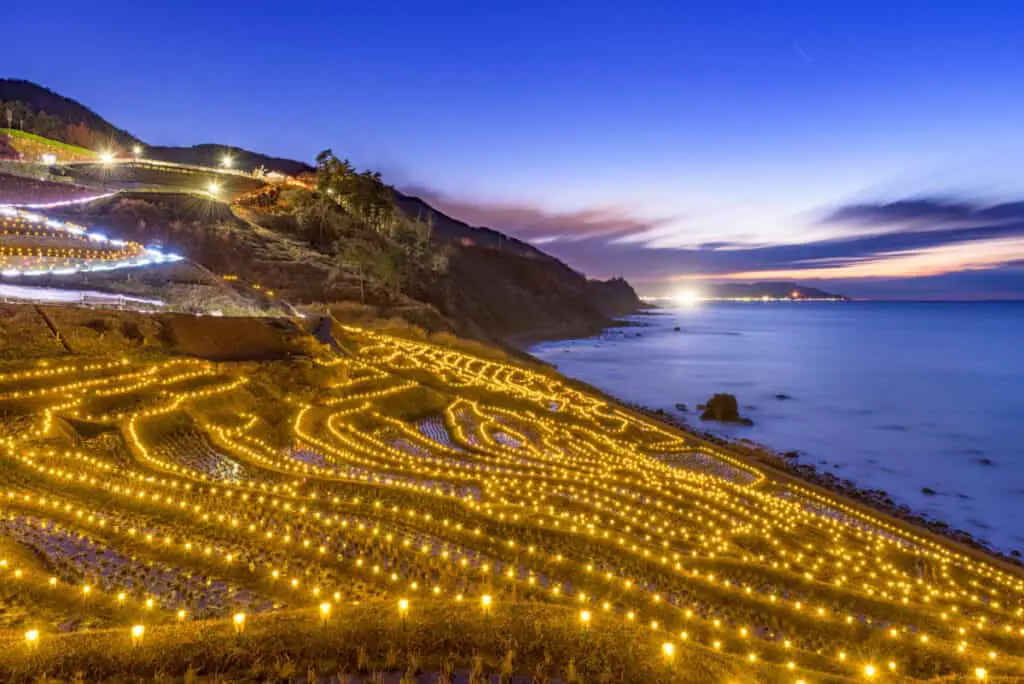
Tanada is gaining so much popularity that there are movements to preserve these rice fields. Even the government will supply subsidies for terraced rice field preservation efforts.
Other things include introducing field ownership to the general public and to increase citizen participation.
Tanada throughout the Seasons
When visiting Japan, many people flock to the rural areas to see the beauty of these terraced rice fields in action. But, it depends on what you want to view since it will be different depending on the season.
Early spring is good to see the sun reflect in the flooded fields. It’s particularly breathtaking during sunrise and sunset. But, summertime reveals the verdant beauty of the area when the rice fields are big and brimming with plant growth. However, Japanese summers can be unbearably hot.
But, September begins the harvest season, and preparations for October. After the harvest of the rice, it sits to dry right in the middle of the fields.
Most Beautiful Terraced Rice Fields Across Japan
From the north end of the country to the south, there are rice terraces. These provide gorgeous ocean views as well as stunning sights of mountainsides and hillsides.
Each season produces a different ambiance and effect, which makes them ideal to visit any time of year. The following list contains some of the most popular and beautiful terraced fields:
- Oyama Senmaida: The only rice fields flooded with rainwater in all of Japan, Oyama is closest to Tokyo. It sits in the Chiba Prefecture and carves hillsides with 40 different tanada.
- Maruyama Senmaida: Nestled in the Mie Prefecture, many people consider this rice field to be Japan’s best landscape. 1,340 pieces cover a 524 feet high slope with a view of 17 acres. In June, fireflies light up the fields at night and give it an almost fairytale-like appearance.
- Shiroyone Senmaida: Located in the Noto Peninsula of the Ishikawa Prefecture near the city of Kanazawa. They have a lighted nightly illumination between October and March. 1,000 fields of rice lead down to the ocean.
- Hamanoura Tanada: The rice fields throughout the Saga Prefecture are amazing against the painted backdrop of the ocean. Sunsets in April through May reveals an awesome reflecting pool dyed orange.
- Hoshitouge Tanada: A number of rice fields reside throughout the Niigata Prefecture, but Hoshitouge is the most spectacular. It has a glassy appearance to the surface of the water and most magical in early September, when the fog of the early morning adds to the view.











